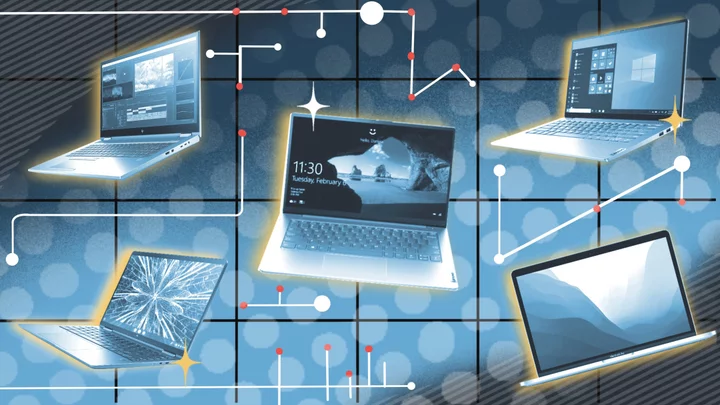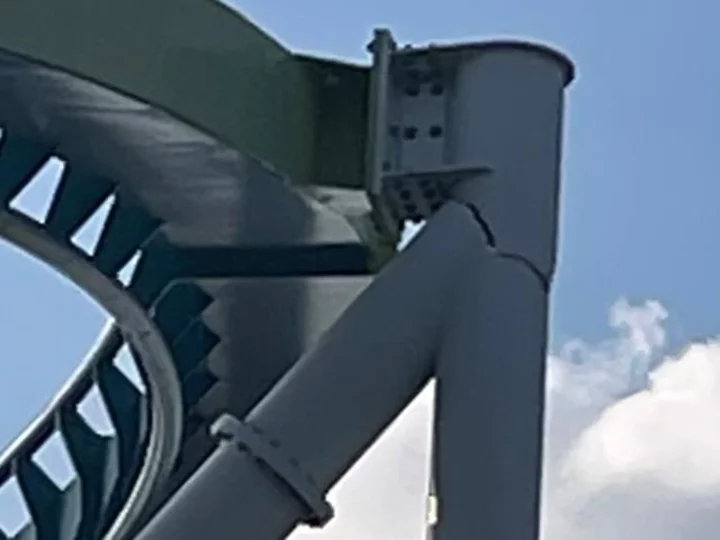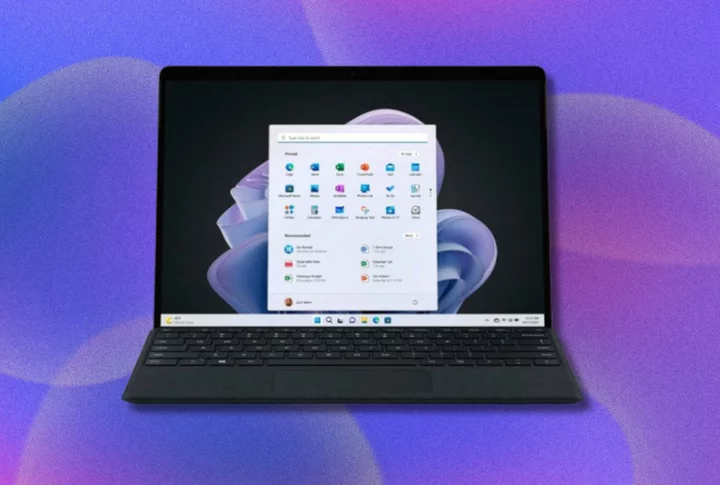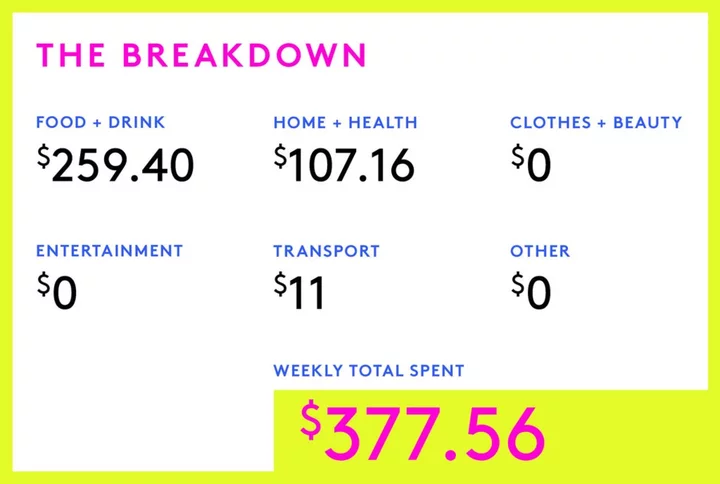Choosing the best laptop for a team is a heavy decision for any business. You need something that's durable, secure, powerful, light, and capable of lasting through a long workday—and you have countless options. We've scanned our recent business laptop reviews and winnowed down our favorite models for getting work done, but as we'll explain in detail after the following picks, selecting from even this subset requires care. Not every laptop matches how you or your employees work, or what you do.
Take a look at some of the best options available, and then read on to learn the fine points of everything from IT management and deployment to secure logins and durable chassis and keyboards. Business laptops work harder than consumer models (and usually cost more), but your business deserves nothing less. These are the best business laptops for 2023.
Every laptop benefits from a speedy CPU, bright screen, comfortable keyboard, and long battery life. But the makers of business models add features to meet specific office needs, such as secure logins (via biometric fingerprint readers or facial recognition or SmartCard IDs) and sturdy designs that have passed MIL-STD 810G or the even more severe 810H tests against road hazards like shock and vibration. (First responders and field workers may require even tougher rugged laptops.)
IT departments appreciate fleet deployment and remote manageability functions like those offered by laptops with Intel vPro processors and Trusted Platform Module (TPM) support for secure access. Enterprises also prefer Windows 11 Pro over the consumer-oriented Windows 11 Home (or sometimes a business-focused Linux distribution) and look for laptops with less bloatware or fewer extraneous bundled programs. With so many thin black and silver notebooks on the market, business machines tend to look samey, but the differences that matter most to office users tend to be below the surface, inside the chassis.
(Credit: Molly Flores)The line between tablets and laptops is also blurring in the business-machine world. Once the two were separated by operating systems, but now several tablets aimed at businesses run true versions of Windows. Some of these tablets even have physical, detachable keyboards.
But make no mistake, in the business sphere, conventional clamshell-style laptops still rule, and choosing the right one can determine whether you run a company that's successful or one that suffers from too much downtime. Let's walk through essential business-laptop features, the components you'll need, and—also important—how to distinguish between a business laptop and a consumer one.
Which Processor Should I Get in a Business Laptop?
Choosing the right processor for your business machines can be a little complicated, but we have a few rules of thumb to bear in mind whether you're shopping for a personal work machine or upgrading the IT fleet for your whole company.
The first has to do with processor generations. While business systems aren't updated as swiftly as consumer laptops, it's still a smart idea to opt for the current CPU generation when you have the choice. Today, that means Intel's 13th Gen CPUs, previously called "Raptor Lake." The new models feature the same hybrid architecture of 12th Gen "Alder Lake" chips, which pair high-powered Performance cores with low-powered Efficiency cores for multicore processing that can optimize for power or performance, as needed, but now with more of those E-cores.
Non-Intel chips are less prevalent in the business space, but if you have an option, look for AMD's 6000-series Ryzen 7 and Ryzen 9 CPUs (which are slowly being replaced with AMD 7000-series chips). Meanwhile, Apple is meeting business needs with M2-series processors, with the latest M2 Pro and M2 Max made to offer business and workstation-class capabilities, respectively.
As in years past, having more cores is better, but guidelines about quad-core chips seem a bit quaint when Intel's top model, the Core i9-13980HX, packs in 24 cores (8 Performance cores, 16 Efficient cores). Similarly, advice about clock speeds is also outdated, as Intel has stopped using GHz ratings as a way to indicate baseline performance—only boosted clock speeds.
(Credit: Kyle Cobian)Instead, your best bet is to go by our advice on choosing a laptop CPU, and choose something according to processor tier. For Intel, that means Core i3 models for the most basic work, since they're best suited to web browsing and data entry. Core i5 and Core i7 are better for more demanding work, while Core i9 is the best option for workstation laptops that need more horsepower to crunch huge data sets or render complex models.
You can find low-end business systems that use Intel's Pentium and Celeron processors, but these aren't well suited to daily work. Instead, these are ideal options for less-demanding uses, like running signage or powering a simple in-store kiosk.
On Apple, most professionals will be well served with an M2 or M2 Pro processor, as these chips will handle all sorts of workloads, up to and including video editing. But for serious media work or workstation tasks, we recommend the more capable M2 Max.
As for AMD systems, Ryzen 3 may be sufficient for office work, but most pros will want a Ryzen 5 or Ryzen 7 processor to help power through demanding tasks.
Finally, consider the form factor. As a rule, Intel's H- and HX-series will offer the highest power for the most demanding uses and will be found in mobile workstations and creator laptops, while P-Series CPUs are made to deliver high performance in thin-and-light laptops. Ultraportable laptops generally use lower-wattage chips, such as Intel's U-Series of 15-watt processors. But even with the U-Series models, the basic tiers are there, with Core i3, Core i5, and Core i7 chips each offering good, better, and best processing power.
Also, look for absolutely no less than 8GB of RAM if shopping for a PC for a rank-and-file worker, but go for 16GB if at all possible. (Graphic artists and spreadsheet ninjas should aim for 16GB as their absolute minimum.) The right amount of memory allows you to keep more programs and browser tabs open at once, as well as perform multimedia processes (such as editing photos) faster.
Go Solid State, If You Can: Laptop SSDs
With businesses using video, multimedia PowerPoint slides, and multi-megapixel photos in staff meetings virtual and in-person, opting for a spacious drive is a smart idea. If you're going to go with a traditional platter drive (and at this point, you probably should not), a 1TB hard drive is a decent balance between economy and space.
That said, we're huge fans of solid-state boot drives, and almost all business laptops have moved over to them at this point. While pricier and more meager in their storage capacities, solid-state drives (SSDs) don't have any spinning parts and are therefore better suited to take a licking on the road. SSD-equipped systems also boot and launch apps more quickly. If you'll travel or commute much with your laptop and don't need maximal storage capacity, an SSD is the right choice. SSDs tend to be pricier than hard drives, which means that you'll likely be looking at 256GB or 512GB capacities to maximize your budget.
(Credit: Joseph Maldonado)Optical drives have all but disappeared on business laptops. If you need to retrieve older files or records stored on CDs or DVDs, an external disc drive can help; that's a smarter move than buying a bulky laptop equipped with an optical drive if you know you're not quite done shuffling discs yet.
What Graphics Should You Get in Your Laptop? Integrated vs. Dedicated
Most business PCs come with integrated graphics chips, which are a lightweight graphics-acceleration solution that's part of the main CPU. These integrated GPUs are usually fine for business laptops since you won't be playing 3D games on a computer meant for work. (Right?) Most professionals who require discrete graphics will use them for specialized tasks such as GPU acceleration in Photoshop, high-definition video creation in Adobe Premiere Pro, or 3D graphics visualization in architectural drawings and CAD software. Mobile-workstation-class laptops will usually come with some sort of discrete graphics, either for their 3D capabilities or to drive multiple monitors.
When evaluating graphics solutions, it's easy to tell what tier of business laptop you're looking at. Integrated graphics silicon is usually dubbed "Intel HD Graphics," "Intel UHD Graphics," "Iris Plus Graphics," or "Iris Xe Graphics" and indicates a mainstream business machine. (Iris Xe Graphics indicate the most up-to-date silicon inside; Radeon Graphics is what you get in the rare AMD Ryzen Pro-based business machines.)
In contrast to integrated solutions, the most common dedicated graphics chips in laptops, as a whole, are from Nvidia's GeForce line, but they are not usual fare in business machines. GeForce GTX or RTX chips tend to be reserved for higher-end consumer or gaming systems, though some business machines will include one of Nvidia's lesser GeForce MX chips to give graphics a little boost. A higher-end workstation machine will tend to use dedicated graphics chips from Nvidia's RTX A series (formerly known as Quadro) or (rarely) AMD's Radeon Pro line.
The exception to this rule is Apple, which builds pro-level graphics processing right into its higher-end chips. Even the basic M1 and M2-powered MacBook Pros may be limited to some light photo and video editing, but the beefier M2 Pro and M2 Max processors found in the MacBook Pro offer the same level of graphics power as a Windows system with a dedicated GPU, and even compete with workstation systems.
(Credit: Kyle Cobian)As for the display panel, LCD screens with 1,366-by-768-pixel resolution are still available if you're trying to save some money on your laptop, but avoid them. Your eyes will thank you for upgrading to at least a 1,920-by-1,080-pixel display that makes use of in-plane switching (IPS) technology. This combination will ensure that you have plenty of space for displaying many columns of numbers in Excel or arranging many windows on the screen at once, and that your coworkers will be able to see them from any angle while clustering around your desk.
For graphics or scientific work, a 3K or 4K display provides more real estate still, as well as sharper text and more detailed visuals. Though these are still fairly uncommon fixtures on business laptops, they're emerging at least as options in some isolated models, and worth the money if your job will make use of extra pixels. Just know that, all else being equal, a high-resolution screen will drain battery life more rapidly than a lower-res one of the same base technology.
Stay Connected: Wired and Wireless Options
An effective and fast wireless connectivity load-out is essential in any business machine these days. Offices, airports, and client sites demand wireless connectivity for access to real-time email, messaging clients, and cloud services. Few businesspeople work fully local anymore.
Every laptop these days has some flavor of Wi-Fi built in. It should get you satisfactory throughput, but you have to find a hotspot or an unprotected network to surf the web. Look for dual-band (2.4GHz and 5GHz) Wi-Fi for the best flexibility for your IT organization. The most common kind nowadays, 802.11ax (Wi-Fi 6), runs primarily on 5GHz networks, but it will work with 2.4GHz networks as a fallback. Just look out for Wi-Fi 6E, the newest standard in 2023 that is quickly gaining traction.
Offices in high-density buildings may wish to use the less-populated 5GHz bands, as the 2.4GHz channels tend to get more crowded. Some budget business laptops still come with older 802.11ac Wi-Fi 5; these may offer less reliable connections but are still adequate for most small and medium businesses.
Don't discount good old Ethernet entirely: You'll still need it for crowded conferences where the Wi-Fi is saturated. So, if your laptop is too thin to house an Ethernet jack, a USB-to-Ethernet adapter is a worthwhile investment. (One might come in the box.)
(Credit: Joseph Maldonado)These difficulties are, in part, why some business laptops have built-in mobile-broadband wireless modems as options. They work in tandem with available cellular networks to bring broadband speeds to your laptop wherever you find a cellular signal available. You can configure many business laptops with one of these modems integrated for a nominal fee; this option is one of the key distinguishing features of business laptops.
Mobile data plans to use with the laptop, on the other hand, don't come cheap. Depending on whether you have an existing plan, rates can run as high as $60 to $80 per month. A 4G LTE or 5G wireless connection will give you transfer speeds rivaling what you get from a Wi-Fi connection, and they're available from the top cellular networks with the most coverage, notably AT&T, T-Mobile, and Verizon. Mobile hotspots and smartphone tethering are also available in case you don't want to buy internal modems for all your employees; they're a quick fix if you only need mobile internet part-time.
Keep Running: How to Get the Best Laptop Battery Life
A big battery can be your best friend on a lengthy flight or a long commute. Business laptops usually come with multiple battery options. Some enterprise-class laptops have two or three different kinds of batteries (four-, six-, and nine-cell options). More cells means longer battery life, all else being equal. The "equal" is the tricky part; this isn't always the case with laptops that use 4K displays or other power-hungry components. A big battery adds some heft, but being able to run it unplugged from dawn 'til dusk is worth the weight gain.
Most ultraportable laptops have non-removable, sealed-in batteries. Laptops with removable batteries do still exist, but they are increasingly uncommon, limited mostly to rugged tablets and laptops designed for extreme conditions.
If you think you'll need more battery life than a single charge can offer, look for an external battery pack rather than limiting yourself to a model with a swappable internal battery. Combined with the internal battery, these external solutions can help deliver battery life in the 19-to-24-hour range. Just be forewarned that these extra-life batteries can weigh down your system by an extra pound or more.
2-in-1 Laptops: Are They Good for Work?
Price and portability are arguably the biggest reasons why a business might consider a Windows-based tablet for work. Some tablets sell for less than $500 and can easily adapt into a corporate environment. While specialized (i.e. expensive) tablets have been in vertical markets, such as health care, for years, the ubiquity of the Apple iPad means that people are used to carrying a computer that doesn't have a physical keyboard or that uses a detachable, basic one.
Look for a Windows tablet if you need to run in-house or third-party apps that were originally created for PCs. True enterprise-class tablets running Windows are still evolving, but most business users expect their work computers to behave the same as their personal tablets. Apple fans will have to be content with using the iPad or iPad Pro for business, as a tablet-optimized version of macOS doesn't exist.
(Credit: Molly Flores)Most Windows tablets are built to surf the web, run Office apps, and perform other super-light computing tasks, but they are also compatible with the gamut of security applications, VPN and email clients, and countless hardware peripherals such as printers, scanners, and network-attached storage (NAS) devices. We wouldn't run an entire business on a tablet, but one can be a helpful take-along unit for an offsite meeting or used as a portable alternative to your six-pound big-screen bruiser of a workstation. Microsoft (with its Surface line) and Lenovo (with its ThinkPad variants) are the key players in this market for business Windows tablets.
The Best Chromebooks for Business: Simple and Affordable
With the cloud becoming omnipresent in our computing lives at both work and home, Chromebooks are more viable options than ever for laptops devoted to work activity. These laptops are restricted to using Google's ChromeOS, which began as a souped-up version of the popular web browser. Android apps from the Google Play Store (such as the Microsoft Office suite or Adobe Photoshop Lightroom) extend Chromebooks' abilities, but they often lack features found on the Windows-based versions of the same programs. Businesses that run their core applications on the Google suite may find Chromebooks useful under certain circumstances, though, as emailing and communications stations. The latest models even have Intel vPro IT manageability and security tech built in.
(Credit: Molly Flores)If web-based collaboration is key to your workflow, a Chromebook could be enough, and because Chromebooks don't need powerful hardware to run most web apps, they generally cost a lot less than other business laptops. Some Chromebooks designed for work do have beefier processors and more memory. Our general takeaway, though, is that under most circumstances, they tend to work better as adjunct than primary machines in most businesses.
So, What Is the Best Business Laptop to Buy?
Take some time to consider the nature of your particular job. Doing so should point you toward the ideal business laptop. Paying a little extra for more power or capabilities now will save you headaches down the road. The added value of a longer warranty (some business laptops come with three years), specialized tech support, and a more ruggedized frame (fortified by carbon fiber or magnesium alloy) are some of the extra benefits you may get with a business laptop.
If your work is graphics-intensive, you'll want to opt for a laptop with a discrete GPU. When choosing a processor, you'll have to find the right balance between power for your applications and energy efficiency, and in selecting a battery, you'll need to choose between its capacity and weight. When you determine the best features for your needs, you can focus on just those laptops that incorporate them. And that's where our deep-dive reviews come in.
Our current favorite business laptops are laid out in our spec list. We refresh the list often to include the newest products, and because of the large number of laptops we review every year, not every top-rated product makes the cut. For more, also see our overall top laptop picks, and if money is tight, our roundup of the best budget laptops is worth a read. And if you're looking to fully outfit your work area, also check out our takes on the best business monitors, plus our favorite ergonomic keyboards and printers.









